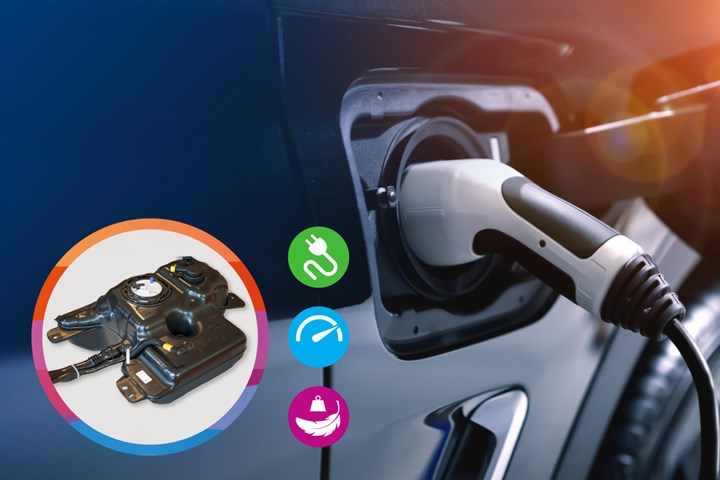Extending the Repertoire of Blow Molded Nylon Fuel Tanks
The second blow molded monolayer nylon 6 auto fuel tank using DSM’s Akulon Fuel Lock is a plug-in hybrid – another first.

DSM’s Akulon Fuel Lock is said to be the first monolayer nylon 6 fuel tank in a plug-in hybrid vehicle, Renault’s 2021-model Captur E-Tech. (Photo: DSM Engineering Plastics)
For more than a decade, monolayer blow molded nylon 6 has been an available alternative to coextruded or fluorinated HDPE for fuel tanks. DSM Engineering Plastics introduced Akulon Fuel Lock, a family of nylon 6 materials with higher barrier than standard PA6, allowing for thinner walls in monolayer tanks. It was offered initially for small-engine fuel tanks for lawnmowers, off-road vehicles, etc. Then, in 2018, Akulon Fuel Lock was used for the fuel tank of Renault’s Alpine A110 sports car. That was “the world’s first automotive fuel tank in polyamide,” according to DSM.
In connection with the recent K 2022 show in Düsseldorf, DSM announced what it calls another world’s first, and an extension of its partnership with Renault, in an Akulon Fuel Lock blow molded monolayer fuel tank for the 2021-model Captur E-Tech plug-in hybrid (PHEV). Its weight is much less than steel tanks and about the same as multilayer HDPE alternatives, but biobased Akulon Fuel Lock offers a simpler monomaterial solution without the complex additional features required by HDPE structures to prevent permeation and withstand the extended periods of internal pressure inherent in plug-in hybrids.
DSM also notes that Akulon Fuel Lock is a “drop-in solution” offering “a second life to the monolayer blow molding machines dedicated to production of the declining diesel monolayer fuel tanks.”
Related Content
-
The state of recycled carbon fiber
As the need for carbon fiber rises, can recycling fill the gap?
-
Jeep all-composite roof receivers achieve steel performance at low mass
Ultrashort carbon fiber/PPA replaces steel on rooftop brackets to hold Jeep soft tops, hardtops.
-
McLaren celebrates 10 years of the McLaren P1 hybrid hypercar
Lightweight carbon fiber construction, Formula 1-inspired aerodynamics and high-performance hybrid powertrain technologies hallmark this hybrid vehicle, serve as a springboard for new race cars.









.jpg;maxWidth=300;quality=90)



